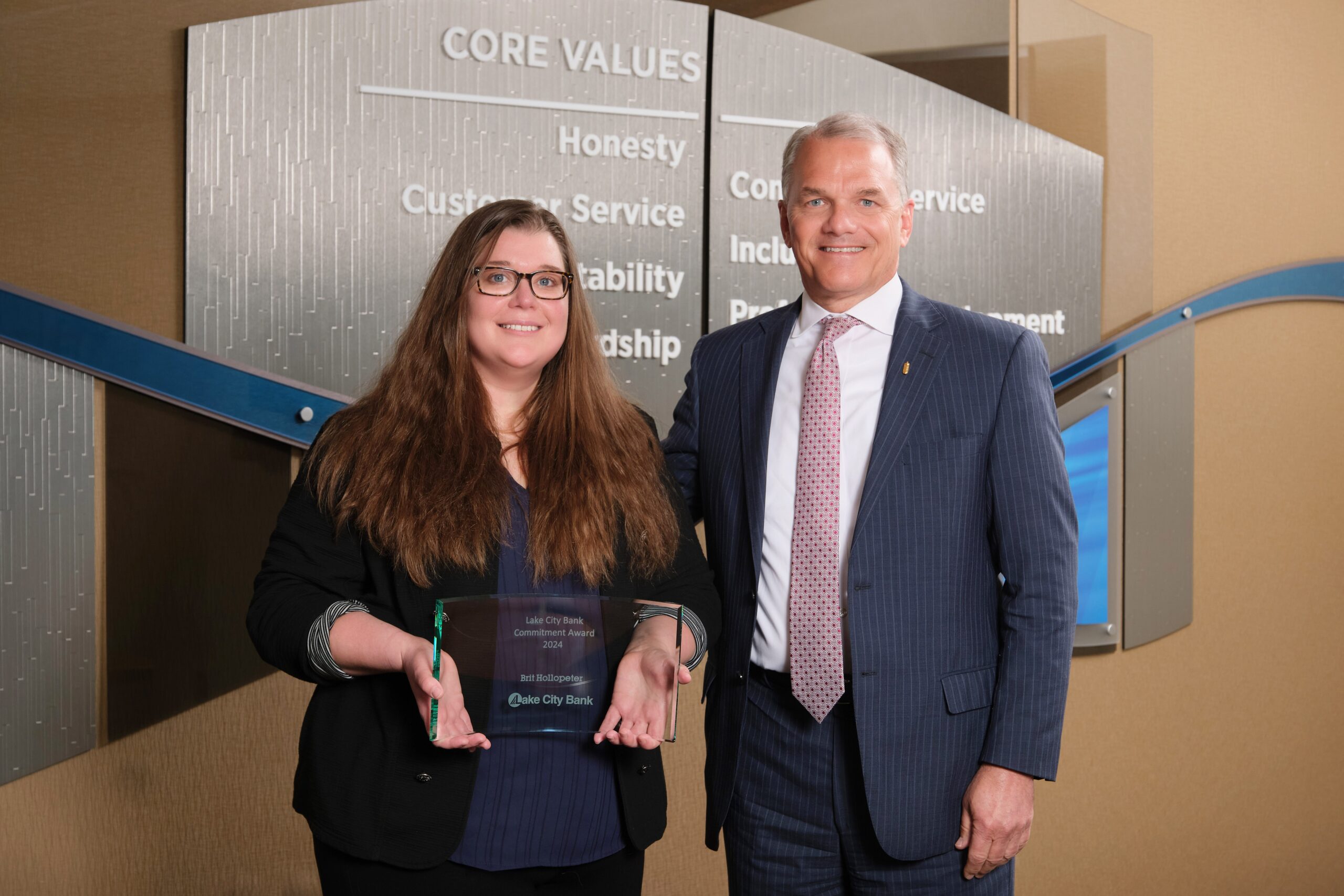Financial goals every small business should have
Key Takeaways
-
-
-
-
- Dedicate time and resources to build a strong financial foundation for your business.
- Set SMART goals and work to achieve them.
- Analyze your successes and failures when planning for the future.
- Monitor your competition.
- Watch your cash flow and adjust as needed.
- Don’t be afraid to ask for advice.
- Manage your debt and savings to strengthen your finances.
-
Your business—whether it’s a corner bakery, a garden center or an accounting practice—needs a firm financial foundation to survive. Setting and reaching financial goals means the business that started with your passion will thrive. Read on for financial goals that every small business should have.
Learn from successes and failures
Spend some time thinking about what has worked for your business and why. Do more of what works. Likewise, understand why certain ideas didn’t work so you can improve or try something new.
Set goals and make them SMART
When you set goals, make them SMART: Specific, Measurable, Achievable, Relevant and Time-bound. For example, you may want to increase sales by five percent in six months. SMART goals like this help you narrow your focus and increase your potential for success.
Keep track
Even SMART goals need monitoring! Design a plan for how you’ll meet your goals, then monitor regularly to make sure you’re on track.
Check out the competition
Pay close attention to your competition. Study their product offerings, pricing, wins and losses, and reputation within the community. Visiting your competition as a customer to get first-hand insights and keeping an eye on their online presence are great first steps. You’ll be better able to differentiate your business, target unmet needs, and avoid their mistakes.
Keep a close watch on dollars and cents
Make sure you’re using tools to make the most of your assets. Create a budget and stick to it. Review your budget regularly to make sure it meets your needs. Manage your cash flow by monitoring your accounts payable and receivable and analyzing patterns. If needed, shorten payment terms to improve cash flow.
Don’t forget savings and debt
Reducing debt lowers interest costs and frees up money for other things. Just like at home, your business needs savings to take advantage of opportunities when they arise and to deal with emergencies.
Ask for advice
Don’t be afraid to consult with experts who can help you tackle unfamiliar topics. Accountants, financial advisors, tax planners and your community bank around the corner can help you refine your goals, plan for tax issues and navigate money management.
No matter the business you’re in, setting and reaching financial goals will help your business thrive.
-
-

Repurposing for the Future: Making the Most of Our Brick-and-Mortar
Lake City Bank’s Carmel, Indiana office is one of many locations created by repurposing an existing building—making smart use of resources while maintaining strong community connections.
At Lake City Bank, recycling takes on a whole new meaning when it comes to buildings. For decades, the bank has prioritized repurposing existing facilities over constructing new ones, embodying its commitment to sustainably managing resources.
“We integrate eco-friendly practices into every aspect of our operations, including our facilities,” said Lake City Bank President Kristin Pruitt. “When it’s possible and makes sense strategically, we prefer to repurpose a building rather than build a new one.”
A prime example is the bank’s headquarters building in Warsaw. Originally built in 1961 as the downtown Warsaw office, it underwent a significant expansion in 1972 with the addition of a second story to increase office space. Subsequent remodels to this building and others have ensured that the bank’s technology, HVAC and energy systems remain up to date. Across all renovation and construction projects, the bank has replaced older lighting fixtures with LED lighting, many of which include motion sensors to further conserve energy—resulting in a 50% reduction in lighting energy consumption.
The headquarters anchors the bank’s downtown campus, which comprises seven buildings and houses approximately 270 employees. Since 2020, the bank has invested around $30 million to modernize the downtown campus and its 12 Kosciusko County branches. The latest addition, the Innovation and Technology Center, was purchased for renovation in the fall of 2024.
“Our presence in downtown Warsaw matters on several levels,” said David M. Findlay, Chairman and Chief Executive Officer. “Lake City Bank started here in 1872, and we plan to stay here. As a community bank, we are committed to contributing to the vitality of downtown Warsaw. Having our operations, technology and support teams together on one campus fosters in-person connections, which we believe leads to better outcomes for both the bank and our customers.”
The bank’s reuse-recycle philosophy extends to its branch buildings as well. Over a third of the bank’s 54 offices are located in upcycled existing buildings. This approach not only reduces costs compared to new construction but also minimizes landfill waste from building demolition.
“Our strategy for adapting buildings for our branches is simple,” said Executive Vice President and Chief Retail Banking Officer Stephanie Leniski. “We aim to be centrally located in the communities we serve. Often, we find a great existing location and adapt it rather than build a new facility. It’s a win all the way around because we help preserve a community’s architectural character and we add a great location to our branch network.”
The bank considers future growth and needs before starting any building or remodeling project.
“We build with growth in mind,” said Vice President and Director of Facilities and Security Rich Hoover. “Planning space for additional employees and functionality helps us react quickly when the need to expand arises.”
Managing resources through remodeling and reusing existing facilities is just part of Lake City Bank’s commitment to sustainability. The bank’s energy efficiency initiatives, paperless enhancements, and recycling programs touch every area of the company. Read more here.

Community vs. Big Banks: Understanding the Key Differences
Key Takeaways
-
-
-
-
-
- Banks vary in size; community banks can offer local expertise based on smaller size.
- In general, bank products and services are very similar, but can vary in complexity.
- Most banks protect deposits through FDIC membership.
- Digital banking access allows you to monitor your accounts and bank online, but systems vary.
- Community banks are more likely to make decisions, particularly for business loans, based on local conditions and relationships.
-
-
With so many banks available, choosing the best one for you can seem complicated. Comparing big banks to community banks can help clarify your options.
What’s a community bank? What’s a big bank?
Asset size is a good baseline for comparing banks and what they offer. According to the Federal Reserve, community banks have less than $10 billion in assets, while regional banks have $10 billion to $100 billion.1 Banks with more than $100 billion in assets are considered Large Financial Institutions.2 The size of the bank can affect what it offers, like the number of products, loan decisions and fees.
Regardless of size, banks have a lot in common
In principle, all banks operate the same way: they pay interest on deposits and then charge interest to loan money. Banks provide security, too. Most U.S. banks protect deposits through membership in the Federal Deposit Insurance Corporation (FDIC). FDIC insurance secures deposits against bank failure up to $250,000 per depositor, per ownership category.3
Banks differ in other ways too. Read on to find out more.
Products and services
All banks offer similar products and services: deposit products like checking and savings accounts; loans for individuals like home mortgages, home equity lines of credit, credit cards and personal loans; and loans for businesses like equipment loans, operating expense lines of credit and property loans. Based on resources, big banks often offer a larger and more specialized set of products than community banks.
Access to your money
People want to access their accounts anytime, anywhere. Digital access varies significantly among banks, with larger institutions typically offering more advanced solutions compared to community banks. It’s worth researching, however, as Lake City Bank Digital is comparable to the digital offerings of larger banks.
Big banks have more branch offices and ATMs across larger geographic areas, making it easier for customers to stay with the same bank if they move to a new city. Some smaller banks, like Lake City Bank, offer checking accounts that refund ATM fees up to a certain level if account requirements are met.
Local or Centralized
Community banks focus on local areas, resulting in more personalized service and involvement in local activities. Often, business loans are approved and priced locally based on local business and economic insights. While large banks can offer a broader product set than smaller banks, loan decisions are typically made centrally, without the customization that comes from local knowledge.
What’s best for me?
Your choice should reflect what you need most from a financial institution. Be sure to do your research before you make that first deposit.
Sources:
1 https://www.federalreserve.gov/supervisionreg/community-and-regional-financial-institutions.htm
2 https://www.federalreserve.gov/supervisionreg/large-financial-institutions.htm
3 https://www.fdic.gov/resources/deposit-insurance/financial-products-insured
-
-

Lake City Bank’s Eric D. Neuenschwander Promoted to Vice President, Fair Lending Officer

Lake City Bank is pleased to announce that Eric D. Neuenschwander has been promoted to Vice President, Fair Lending Officer.
In this position, Neuenschwander is responsible for implementing fair lending initiatives and creating and maintaining fair lending and redlining risk assessments. He has been with the bank for 17 years.
Neuenschwander earned a bachelor’s degree from Huntington University and has a Certified Regulatory Compliance Manager (CRCM) certification.
He volunteers with Junior Achievement and Youth for Christ Northern Indiana.
Lake City Bank, a $6.9 billion bank headquartered in Warsaw, Indiana, was founded in 1872 and serves Central and Northern Indiana communities with 54 branch offices and a robust digital banking platform. Lake City Bank’s community banking model prioritizes building in-market long-term customer relationships while delivering technology-forward solutions for retail and commercial clients. The bank is the single bank subsidiary of Lakeland Financial Corporation (Nasdaq Global Select/LKFN). For more information visit www.lakecitybank.com.

Lakeland Financial Reports a 12% Increase in Net Interest Income and Organic Loan Growth of 4%
Lakeland Financial Corporation (Nasdaq Global Select/LKFN), parent company of Lake City Bank, today reported net income of $20.1 million for the three months ended March 31, 2025, which represents a decrease of $3.3 million, or 14%, compared with net income of $23.4 million for the three months ended March 31, 2024. Diluted earnings per share were $0.78 for the first quarter of 2025 and decreased $0.13, or 14%, compared to $0.91 for the first quarter of 2024. On a linked quarter basis, net income decreased $4.1 million, or 17%, to $24.2 million. Diluted earnings per share decreased $0.16, or 17%, from $0.94 on a linked quarter basis. Read more.

Lake City Bank Presents 2024 Commitment Award to Assistant Vice President Brit Hollopeter
 Pictured: Brit Hollopeter, Assistant Vice President, Loan Operations Manager, the 2024 recipient of Lake City Bank’s Commitment Award, with David Findlay, Chairman and Chief Executive Officer.
Pictured: Brit Hollopeter, Assistant Vice President, Loan Operations Manager, the 2024 recipient of Lake City Bank’s Commitment Award, with David Findlay, Chairman and Chief Executive Officer.
Lake City Bank announced Brit Hollopeter, Assistant Vice President, Retail Loan Operations Manager, as its 2024 Commitment Award recipient at the bank’s first quarter Town Hall meeting.
“During the last several years, Brit has consistently stepped up to the challenges that have come her way. She epitomizes the Lake City Bank culture, and we are very proud to recognize her with the Commitment Award. This award underscores how the Lake City Bank team demonstrates our core values at work and in our communities,” said David M. Findlay, Chairman and Chief Executive Officer. “Brit is a real team player, and she consistently goes above and beyond to support those around her with compassion and strength. She works closely with her team members to help them succeed and grow professionally. It’s no surprise that her colleagues nominated her for the award.”
Hollopeter joined Lake City Bank in 2017 and was promoted to Assistant Vice President, Retail Loan Operations Manager, last year. She leads the Retail Loan Operations team, managing workflow, training new employees and assisting colleagues and customers. She enjoys volunteering with Junior Achievement’s BizTown and the Lake City Bank Reality Store, both of which help build financial literacy with local students.
Hollopeter’s teammates, who nominated her for the award, cited her steadfast leadership, especially during the past year, which brought challenges for her department. She exemplifies stewardship, one of the bank’s core values, by working with her team so that each member is successful in their role. Her upbeat and calm leadership make her a great role model for others.
Lake City Bank, a $6.7 billion bank headquartered in Warsaw, Indiana, was founded in 1872 and serves Central and Northern Indiana communities with 54 branch offices and a robust digital banking platform. Lake City Bank’s community banking model prioritizes building in-market long-term customer relationships while delivering technology-forward solutions for retail and commercial clients. The bank is the single bank subsidiary of Lakeland Financial Corporation (Nasdaq Global Select/LKFN).

A Beginner’s Guide to Investing
Key Takeaways
-
-
-
-
-
- Start with a small amount and grow your investments over time.
- Spread investments across different assets to reduce risk.
- Choose investments that match your risk tolerance.
- Invest long-term to benefit from returns on returns.
-
-
Investment products used by Eko are not FDIC insured, are not a deposit, are not obligations of, nor guaranteed by Lake City Bank and may involve risk including possible loss of principal.
-
- April is Financial Literacy Month, a great reminder to focus on improving your understanding of personal finance. At Lake City Bank, we believe that knowledge is power, especially when it comes to your money. This month, we’re highlighting the importance of investing and how investing can potentially help you achieve your financial goals.
Investing Basics
Investing is all about putting your money to work with the goal of growing your wealth over time. It can seem intimidating at first, but understanding some basic concepts can make a big difference:
4 Basic Concepts for Investing That Can Help You Start
- Start Small: You don’t need a lot of money to begin investing. Starting with a small amount and gradually increasing your investments can lead to substantial growth over time.
- Diversification: Avoid putting all your eggs in one basket. Diversifying your investments across different asset classes (like stocks and bonds) and sectors can help reduce risk. Imagine owning stock in just one company. If that company struggles, your entire investment is at risk. But if you own stock in ten different companies across different industries, the risk is spread out.
- Risk Tolerance: Everyone has a different comfort level with risk. Understanding your risk tolerance will help you choose investments that align with your goals and personality. Remember, the higher the potential reward, the higher the potential risk. Are you comfortable with the possibility of your investments losing value in the short term if it means they have the potential to grow more in the long term? Or do you prefer potentially slower, steadier growth with less risk?
- Compounding Interest: This is why investing for the long term is important! Compounding allows any investment returns to earn returns, accelerating your wealth growth over time. Think of it like a snowball rolling downhill: it starts small, but as it rolls, it picks up more snow and gets bigger and bigger, assuming favorable weather or market conditions.
Making Investing Simple
-
Recurring Deposits: Automate your investments with recurring deposits into your account. This “set it and forget it” method ensures consistent investing and leverages the potential of compounding interest.
- Guided Portfolios: Professionally managed portfolios for a hands-off approach.
- Self-Directed Investing: Build your own portfolio with individual stocks and ETFs (Exchange Traded Funds).
- Hybrid Investing: Combine guided and self-directed for a personalized approach.
Multiple Portfolio Options: Choose from a variety of investment portfolios to match your interests and goals. You’re in control!
-
Take the Next Step with Investing
Explore Investing: Log in to your Lake City Bank Digital account and navigate to the Digital Investing platform to learn more.
Get Started Today: Don’t wait! Begin your investing journey now and make this Financial Literacy Month a turning point for your financial well-being.
Digital Investing is offered through Eko Investments, Inc. Eko’s “Investments as a Service” enables Lake City Bank to offer digital investments directly on our digital banking platform. Investment products used by Eko are not FDIC insured, are not a deposit, are not obligations of, nor guaranteed by Lake City Bank and may involve risk including possible loss of principal. Fees will apply. Click here to access Eko’s disclosures.

Lake City Bank’s Emily E. M. Long Promoted to Payroll Officer

Lake City Bank is pleased to announce that Emily E. M. Long has been promoted to Payroll Officer.
In this position, Long is responsible for supporting and maintaining Lake City Bank’s human resource information system as well as managing and tracking all personnel changes. She has been with the bank for four years.
Long volunteers with Kid’s Market Inc. and Touch of Life church.
Lake City Bank, a $6.7 billion bank headquartered in Warsaw, Indiana, was founded in 1872 and serves Central and Northern Indiana communities with 54 branch offices and a robust digital banking platform. Lake City Bank’s community banking model prioritizes building in-market long-term customer relationships while delivering technology-forward solutions for retail and commercial clients. The bank is the single bank subsidiary of Lakeland Financial Corporation (Nasdaq Global Select/LKFN). For more information visit www.lakecitybank.com.

Lake City Bank’s Ellen J. Vogeler Promoted to Benefits Officer

Lake City Bank is pleased to announce that Ellen J. Vogeler has been promoted to Benefits Officer.
In this position, Vogeler administers the bank’s insurance benefit program and leave of absence program as well as serving as a resource to employees for their benefits inquiries and issues. She has been with the bank for eight years.
Vogeler earned her associate degree in human resource management from Ivy Tech.
Lake City Bank, a $6.7 billion bank headquartered in Warsaw, Indiana, was founded in 1872 and serves Central and Northern Indiana communities with 54 branch offices and a robust digital banking platform. Lake City Bank’s community banking model prioritizes building in-market long-term customer relationships while delivering technology-forward solutions for retail and commercial clients. The bank is the single bank subsidiary of Lakeland Financial Corporation (Nasdaq Global Select/LKFN). For more information visit www.lakecitybank.com.

Mistakes to Avoid for First-Time Homebuyers
Key Takeaways
-
-
-
-
-
- Check your credit report to fix any issues before you start.
- Get preapproved to know how much you can afford, without using all your savings.
- Choose the neighborhood before you choose the house, and stay flexible!
- Compare multiple mortgage offers and explore special loan programs for first-time buyers.
- Work with a realtor and schedule a home inspection before buying.
-
-
Buying your first home is exciting, but it’s also one of the biggest and most complicated financial decisions you’ll ever make. While it’s fun to pick out paint colors and think about decorating, there are some important steps to take first. If you know how to avoid common first-time buyer mistakes, you’ll have a much smoother experience.
Here are some of the biggest pitfalls—and how to steer clear of them.
Mistake #1—Ignoring Your Credit
Your credit score plays a huge role in qualifying for a mortgage. Check your credit report to fix any mistakes that could hurt your score. Many banks and credit card companies offer free access to your score. You can also get a free report from Experian, Equifax, and TransUnion at AnnualCreditReport.com. In addition to monitoring your credit, don’t settle for the first mortgage offer you get. Comparing quotes from multiple lenders lets you find the best rates, fees, and terms. Also, avoid applying for new credit cards or loans while shopping for a home—it can lower your score and impact your mortgage options.
Mistake #2—Shopping without a Preapproval
Going house shopping without a mortgage preapproval is a big mistake. Knowing exactly what you can borrow narrows your search to houses that are realistic for you to purchase. Once you’re preapproved, decide how much to borrow (just because you’re approved for a high loan amount doesn’t mean you should borrow that much). Preapproval also shows sellers you’re serious about buying.
Mistake #3—Focusing Only on the House
It’s easy to fall in love with a house that seems perfect—but don’t forget to think about the neighborhood and surrounding area. Consider schools, shops, commute times, and other factors that affect your quality of life. A great home in the wrong location for you can lead to long-term dissatisfaction. Additionally, working with a real estate agent can help you make smarter choices. Realtors are experts who know the market, neighborhoods, and can help you find a home that fits your needs and lifestyle.
Mistake #4—Using All Your Savings
It’s tempting to put every dollar you’ve saved into your home, but you still need an emergency fund. Save some money for unexpected future expenses like car repairs or medical bills. A separate emergency fund will help you avoid falling behind on other payments.
Mistake #5—Skipping the Inspection
A home inspection is essential for identifying potential problems before you buy. Look for an inspector who is certified by professional associations like the American Society of Home Inspectors (ASHI) or the International Association of Certified Home Inspectors (InterNACHI). Ask friends and family for recommendations and look at sample inspection reports to choose the best inspector.
Mistake #6—Believing You Need a 20% Down Payment
It’s a common belief that you must save 20% of a home’s price for a down payment. While a larger down payment likely means you won’t have to pay Private Mortgage Insurance (PMI), waiting to save 20% could delay your home purchase and other financial goals. You might qualify for special loans with low or no down payments from the FHA, VA, or USDA. Many states also offer first-time buyer programs that include grants, forgivable loans and down payment assistance.
Welcome Home!
Avoiding these mistakes can help you make smarter decisions as you buy your first home. Good luck on your journey to homeownership! -
-




